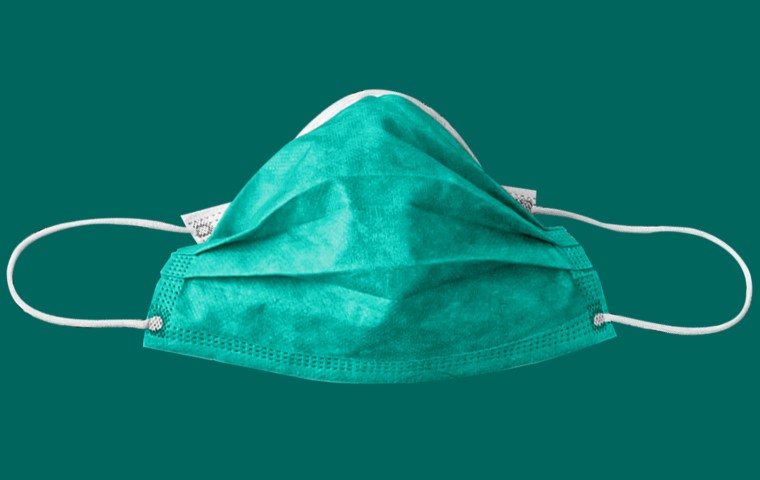
New Study on Preventing COVID-19 Fatalities: State versus Federal Policies.
SANTA CLARA, Calif., Nov. 12, 2020—Politicians and others have lobbed accusations for months that inaction by state and federal government officials contributed to an accelerated spread of COVID-19 in the U.S., including unnecessary deaths.
A new paper by Gustavo Schwenkler of Santa Clara University, Guillaume Rousellet from McGill University and Jean-Paul Renne from the University of Lausanne, uses mathematical modeling to calculate what would have been different if different protocols had been enacted early in the pandemic. Among the findings (which are subject to several caveats, below):
*The number-one saver of lives would have been a nationwide mask mandate at the earliest possible date, which would have complemented state-level policies. From 90,000 to 180,000 deaths could have been prevented if there had been a federal mask mandate sometime between March 17 and April 17.
*The policies implemented by the individual states helped the United States as a whole prevent a significant number of deaths. Around 1 million additional deaths would have been recorded in a worst-case scenario in which no state enforced any kind of containment policy.
*Measured against an “ideal situation” that utilizes the benefit of hindsight, New York seems to have been the best state at preventing avoidable deaths through its interventions—incurring 20% more deaths than under an idealized scenario. Texas and Florida fare worst under this mathematical model —with 20 or 25-times greater deaths, respectively, than an ideal scenario.
*Iowa, Nebraska, South Dakota, and Utah, the four states with the laxest policies, could have prevented more than 70% of their COVID-19 deaths by adopting mask mandates as early as other states did. These findings suggest that new state-level mask mandates, such as the one recently enacted in Utah, can be highly effective.
*The transmission rate of the virus was far greater at the beginning of the pandemic (even controlling for the imposition of prevention protocols) than later. The study breaks down the transmission rates of the virus state by state, which is important to understanding where virus hotspots might emerge.
*Travel restrictions accomplish little in preventing COVID-19 transmission. Only around 6,000 deaths could have been prevented if all interstate travel had been banned by February 12 (the first day of the sample) because the transmission rates of the virus were so high at the beginning of the pandemic. The results of the study suggest that the travel bans are only effective policies to contain COVID-19 if they are enacted early enough to prevent the virus from penetrating a population.
Important caveats:
- The paper did not seek to calculate the economic impact of undertaking any particular interventions.
- The paper did not calculate additional consequences of behavioral changes that might have ensued in the event of any hypothetical actions such as a federal mask mandate.
- The paper does not consider the legality of federal mask mandates or lockdown policies.
- The authors are not epidemiologists; they are econometricians.
- The results are sensitive to modeling assumptions and several robustness checks are carried out in the study to support the findings.
“While we know it’s impossible to judge a state or a country against an ideal scenario in hindsight, statistical modeling can inform our knowledge of transmission rates and what would have been the most effective protocols,” said Prof. Schwenkler. “We hope this research will inform future outbreaks or future pandemics, and prompt federal regulators to act early and decisively to assist state governments in preventing virus transmission and virus deaths,” he added.
Methodology
The results of the paper are obtained by fitting a novel model of virus transmission in a country composed of multiple states. Individuals in the country can travel across state borders and spread the virus in this way. State regulators can implement mask mandates, stay-at-home orders, or interstate travel bans to contain the spread of the virus. The federal regulator can force all states to adopt the same policies or allow states to enact independent policies. The model is fitted to daily state-level death counts in the United States from February 12 to September 30, 2020, while controlling for the different containment policies that were enacted in U.S. states over the sample period. The methodology delivers daily estimates of the transmission rates and the number of infections that must have been recorded in all states to explain the number of deaths observed in the data.
A preprint of the paper can be found online. The paper has been published in Covid Economics, a pre-print series of the Centre for Economic Policy Research.
Media Contact
Deborah Lohse | SCU Media Communications | dlohse@scu.edu | 408-554-5121
"covid-19" by Prachatai is licensed under CC BY-NC-ND 2.0